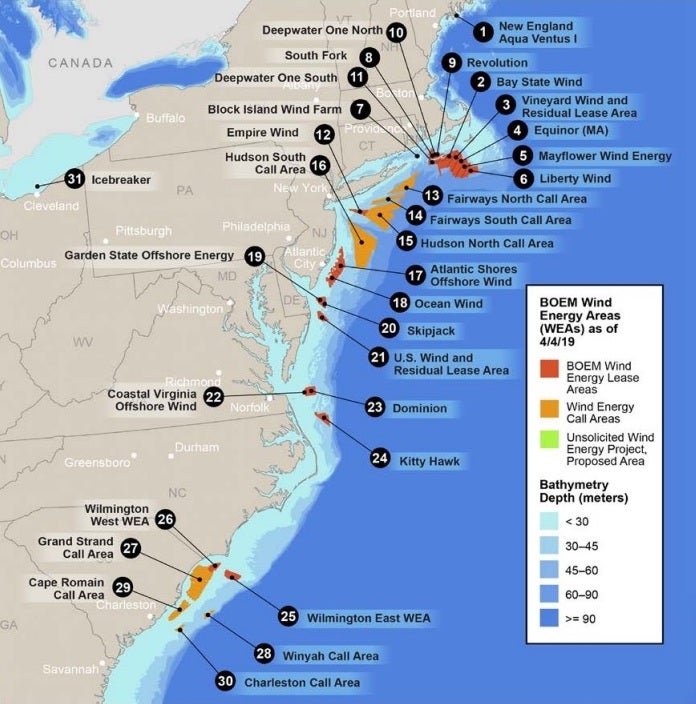This question was supplied by the ‘Ask the Experts’ database managers.
Reviewed by: Jeff Grybowski
Last Update: August 31st, 2020
At the Global Ocean Summit Series: Session 4, Jeff Grybowski (Former CEO of Deepwater Wind) explained how offshore renewable energy is developing along the East Coast of the United States.
With the help of the map below, Grybowski illustrates the many offshore wind developments which are in various phases of permitting, from active development to early planning, that encompass the waters stretching along the coasts of the Gulf of Maine all the way down to South Carolina.

He explains that, for the most part, these projects have been collectively embraced by state energy policymakers. Fundamentally, the development of offshore wind aims to deliver low-cost clean energy to densely populated communities that hold a rich demand for it. Because of the challenges that are associated with other forms of energy, most states have strongly embraced the development of offshore wind.
This presents a real challenge as a quick look at the map reveals a tremendous number of industrial-scale development activities clustered along the coastline. Each individual project consists of multiple billions of dollars of capital investments and will use the world’s largest vessels along with hundreds of workers to install. The projects will also deploy the largest wind turbine generators to date. These turbines will sit atop steel foundations, weighing hundreds of tons each, and secured to the seabed with deep piles. Grybowski explains, “we’re talking about really complicated construction with a long lifetime”. Offshore wind farms are generally designed to actively operate for about 20 to 30 years.
This presents the question— how can development be carried out in such a way that responsibly takes into account the demand for clean energy resources while considering the needs of the entire ecosystem and existing stakeholders? Many of these stakeholders perceive the development as evolving too quickly with potentially long-term impacts that haven’t yet been fully realized.
Grybowski notes that, when talking about engaging with the offshore wind industry ( or any commercial development industry), there is a fundamental challenge of convincing the individual developer to think in terms of a larger ecosystem than their local development site.
When asked about the scale of future wind turbines, Grybowski explains that the turbines are getting larger because, unlike onshore developments, there is a very little limit to the size of the machine that can be installed offshore. Currently, the largest offshore wind turbines are about 850 ft from the water level to the tip of the blade. Over the last few years, this simple measure of height has increased by nearly 50% which is certainly not the limit.
